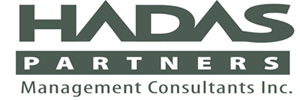While looking into a potential opportunity recently, I came across a technology called Tableau. I had heard of it before, but due to other priorities, I did not have time to look into it in more detail. This time I did.
I went to the Tableau website and started reading. I launched an intro course to learn what Tableau can do. This was a 25 minute course, and I usually only have the patience to spend 5-10 minutes scanning to get a sense of the application. This time I sat riveted to the screen for the full 25 minutes!
 So what is Tableau? You should really check it out for yourselves if you haven’t seen it before. But in short, it is a combination of data file and AI. In the simplest terms, it is a spreadsheet on steroids! You can get whatever report you need, based on the data you have, in real time.
So what is Tableau? You should really check it out for yourselves if you haven’t seen it before. But in short, it is a combination of data file and AI. In the simplest terms, it is a spreadsheet on steroids! You can get whatever report you need, based on the data you have, in real time.
After seeing the video, I called up an old friend, Ojoswi Basu, who has carved out a niche for himself as a Tableau expert. We got together and the more he told me about it, the more I wondered why I had not come across it already, and why more businesses were not using it. I can’t imagine why any senior manager of a mid-sized or larger organization would not want to have access to this type of reporting capability.
What were the hurdles to acceptance and adoption? As someone who specializes in organizational change management (OCM), this intrigued me.
Tableau and Massive Insights
I told Ojoswi I would really like to learn more about these reasons and potentially discuss the reasons in a blog. Ojoswi, being as proactive as I remember him, reached out to Tableau, who put him in touch with one of their premier implementation partners, Massive Insights. We scheduled a meeting with David Kim (CEO), Clarence Chow (COO) and Noah Suh (Associate Director, Business Development) to have the conversation to explore this.
Before I go on further, in terms of full disclosure, neither Tableau nor Massive Insights asked me to write this blog. Nor are they compensating me for it. The driver for this story is my interest in the technology and in the change management challenges of implementing it.
 First, just a little bit about Massive Insights background. The company is in the BI consulting space, and has been in the business of converting data to valuable business information since 2012. They bring together analytics, modelling, data as a service, and marketing consulting as an offer for their clients.
First, just a little bit about Massive Insights background. The company is in the BI consulting space, and has been in the business of converting data to valuable business information since 2012. They bring together analytics, modelling, data as a service, and marketing consulting as an offer for their clients.
Massive Insights’ members have been working independently with Tableau since 2007, and formalized this relationship as a company via a partnership agreement in 2018. This closer collaboration benefitted Massive Insights by bolstering its technology-experienced team with members strong on the business operations, process and implementation areas.
So, we had our conversation, and we learned the following about typical Tableau implementation challenges and how Massive Insights overcomes them.
Typical Tableau Implementation Challenges
Hesitant Client IT Members
Members of a client’s IT department tend to be naturally hesitant, at least initially. They have very reasonable concerns regarding Massive Insights consultants, such as: whether the consultants have another, hidden, agenda; what the consultants will do with their data; whether the consultants will burden them with additional work to maintain the technology afterwards; and, whether they themselves, used to working with older IT systems and apps, can move to a new technology like Tableau.
Busy Executives
 In any company, and especially in large or rapidly growing ones, time with a senior manager is at a premium. So, getting these busy and often distracted decision makers to focus on reviews and approvals is a challenge. This is all the more so as Massive Insights prides itself on following very aggressive implementation timelines.
In any company, and especially in large or rapidly growing ones, time with a senior manager is at a premium. So, getting these busy and often distracted decision makers to focus on reviews and approvals is a challenge. This is all the more so as Massive Insights prides itself on following very aggressive implementation timelines.
Data Accuracy and Availability
The truth is that their clients, as with really most companies out there, tend to use their data assuming it is correct and current. Often a company may have been using less-than-accurate information for years to make key strategic and financial decisions. Simply implementing Tableau using incorrect data would just get the management team to a wrong conclusion much faster.
To really demonstrate the value of Tableau, requires data that is accurate and current, which requires a true understanding of the data and what it means to the business. In preparation for Tableau, the organization may need to make updates to their data, whether it be real time feeds or scheduled batch updates.
Tableau Ease of Use
This challenge is a bit unusual and rare. Most IT implementations suffer from being not as good as what the sales guys (that’s non-gender “guys”) tout. Can you imagine implementing something that is as easy as what they claim? Hard to believe, right?
That seems to be exactly the case here, though. Tableau is very easy to set up and begin using. So much so that the temptation is to do just that: skip a proper implementation approach and just use it right away to generate instant reports! But Tableau is a data-fed application. So results you get are only as good as what you put in. It’s the ol’ “Garbage In – Garbage Out” principle.
How Massive Insights Deals With These Challenges
Now, as a consultant who often leads the OCM component on large projects, I was very curious to hear from David, Clarence and Noah how their organizations deals with these challenges. As you likely noticed, apart from the challenge with accurate data, the rest are mostly people related challenges. Even the “Tableau Ease of Use” challenge is not a technology problem – it’s a perception and behaviour problem.
As with all challenges in business, there is rarely a single, or even best, solution. And this is true here as well. So, Massive Insights has come up with multiple solutions to each challenge listed above. Here is how they deal with these.
Engage Hesitant Client IT Members
- The first principle is Involving members and leaders of IT department in developing the solution. Getting multiple people to contribute and participate in approvals with senior management builds broad engagement through a sense of ownership.
- Details that are important for a client’s culture are customized using prototyping. Prototyping is used to customize of d (e.g., how labels are used, what colours are preferred, and even down to semantics and local expressions).
- Massive Insights has an outcomes oriented approach that includes a heavy emphasis on education and training through guided workshops. With education comes increased ability, which builds confidence, which in turn softens resistance.
Bring Busy Senior Managers On Board
- As David put it simply, “Listen to what the client wants, and deliver.” Massive Insights has found that engaging busy executives is easier if you give them what they want. The consultants providing reports and analysis that senior management have been waiting for a long time, sometimes years.
- It is not just enough to give executives what they want. You have to give it to them…now. This is done by continuously demonstrating the solution capabilities through rapidly building proof-of-concept prototypes. Importantly, these prototypes include a productized version of the Tableau dashboard. This agile approach has the effect of getting management excited by possibilities, and once executives get excited, they then drive the change through the organization.
- Finally, the consultants clearly document scope change requests, and break these down into smaller, “bite-sized” chunks. And what’s more, they link them to KPI’s aligned to the client’s stated strategy.
Insist on Data Accuracy and Availability
- One of the crucial activities is a concerted focus on data documentation. Massive
 Insights devotes extensive effort to ensure quality of data, and to document where the data is coming from. Well documented data flows ensure data feeds (real time or batch) work and are current. Surprisingly, on most similar projects this key component is either not done thoroughly enough, or is rushed.
Insights devotes extensive effort to ensure quality of data, and to document where the data is coming from. Well documented data flows ensure data feeds (real time or batch) work and are current. Surprisingly, on most similar projects this key component is either not done thoroughly enough, or is rushed. - Then comes a key selling point – demonstrating the value of cleaned up data. Tableau is used to generate information using clean data and comparing it to the information the client is currently using to make key decisions. Often there is a significant discrepancy which can lead to some awkward, but insightful, moments for the client. It ends up being a valuable moment of truth where the client decides to revisit some key decisions they have made in the past.
Rigorous Approach to Implement Tableau
- The ease of use of Tableau is actually a bigger challenge that it seems, as everyone is in a hurry and wants results quickly. It is critical here to insist on using structured approach that links responsibilities of the data team, analysis team and client at every step.
- Massive Insights uses a stepwise approach that generally consists of Discovery, Governance, Deployment and Evolution. This can become 4-10 phases, depending on the size of the organization and scope of the implementation. This approach includes ‘mini-gates’ to ensure key individuals are onboard and continue to drive the change. Experience has taught the teams that skipping or rushing a step ends up biting the team in the end. I can personally relate to this when using a change management approach on projects. Skip a step, and you’ll eventually slam into a great, big wall of hurt.
Massive Insights Adoption CSF/Differentiators
Our discussion was very energizing. I always feel encouraged when I see elements of change management applied well. This approach has components of employee engagement, leadership involvement, training, education, and communication that I would encourage any IT implementer to follow. That, together with a clever use of Agile, and some old fashioned, hard-core project management discipline, and it’s no wonder that so many of these implementations work out well.
Speaking to David, Clarence and Noah was also enlightening in another way. It gave me the opportunity to identify some unique characteristics of this organization. Here is my impression of their adoption critical success factors, which combined may differentiate them from other, similar organizations.
Universal Translators
It struck me that Massive Insights doesn’t see themselves as just data analysts or technology implementers. Most similar companies bill themselves as exactly that. Instead, they see their role as being “Universal Translators” of data into usable information for their clients. That shifts the mindset of their consultants on the ground from a focus on data and technology, to the client and their needs.
Empathy
As a change management expert, it also surprised me how often I heard the term “empathy” during our discussion. For them, adoption starts with empathy. This means working hard to really understand the difficulties and constraints of client IT individuals whom they have to work with. It also means working hard to make sure everyone looks good and gets the credit they deserve.
Engagement
 Another highlight for me was the emphasis on “engagement”. This is usually a drum I need to beat on IT projects to get the PM and the team to understand how critical this is. Here, they were singing from what I felt was my song sheet! Basically, Massive Insights uses Agile to build adoption by continuously building minimum viable solutions. Engaging users and management in the continuous review process builds ownership and commitment to that solution.
Another highlight for me was the emphasis on “engagement”. This is usually a drum I need to beat on IT projects to get the PM and the team to understand how critical this is. Here, they were singing from what I felt was my song sheet! Basically, Massive Insights uses Agile to build adoption by continuously building minimum viable solutions. Engaging users and management in the continuous review process builds ownership and commitment to that solution.
Agile Project Management
Lastly, on a project management (as opposed to change management) note – I was intrigued by how Massive Insights uses Agile to drive value within, what to me were, extremely tight deadlines. Technology and process issues bog many project schedules down, or are “parked” never to be heard of again.
Massive Insights uses an approach that could be called ‘shunting’. It works like this. Roadblocks, which cannot be resolved by senior management (for example, lack of access to a particular data flow), are moved and dealt with in separate streams. This way critical results are not delayed, while items that need to be worked on have their own separate focus. In the words of my millennial colleagues and staff, I think that’s sick!
A last word…
A final caveat here. The information from this blog comes from a conversation with the leadership of Massive Insights. I did not validate the success of their approach or projects with their clients or anybody else. That being said, however, their client list is impressive and Tableau has accepted them as partner. In my experience that is hard to do unless you really do good work for your clients.
Like this blog? Share it with your colleagues. And sign up and you won’t miss another one!











